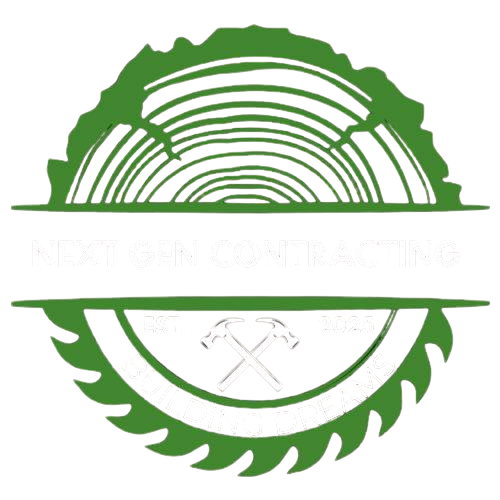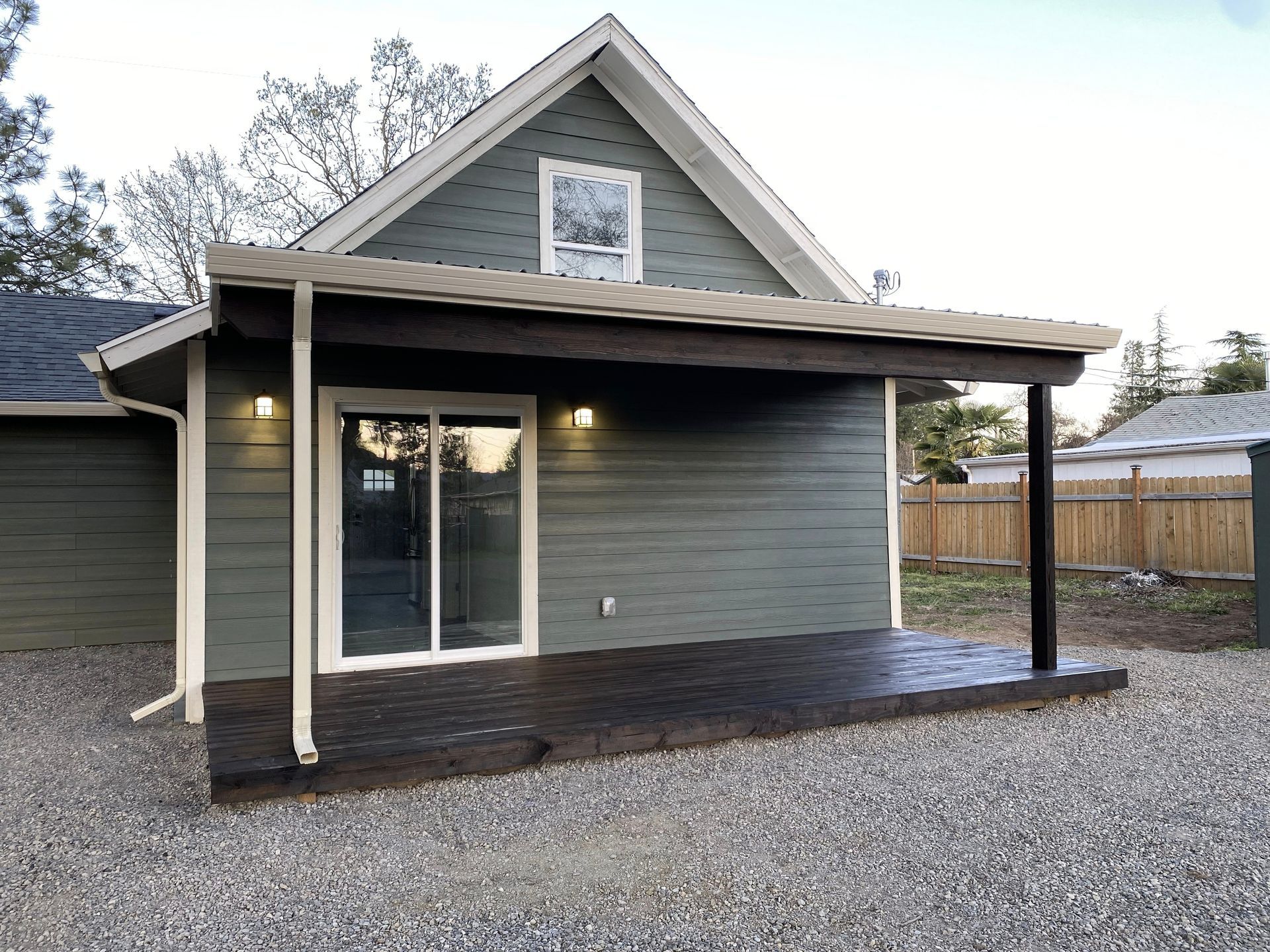Metal Roof vs. Shingles: Which is Best for Southern Oregon?
By Brandon Equitz • November 17, 2025
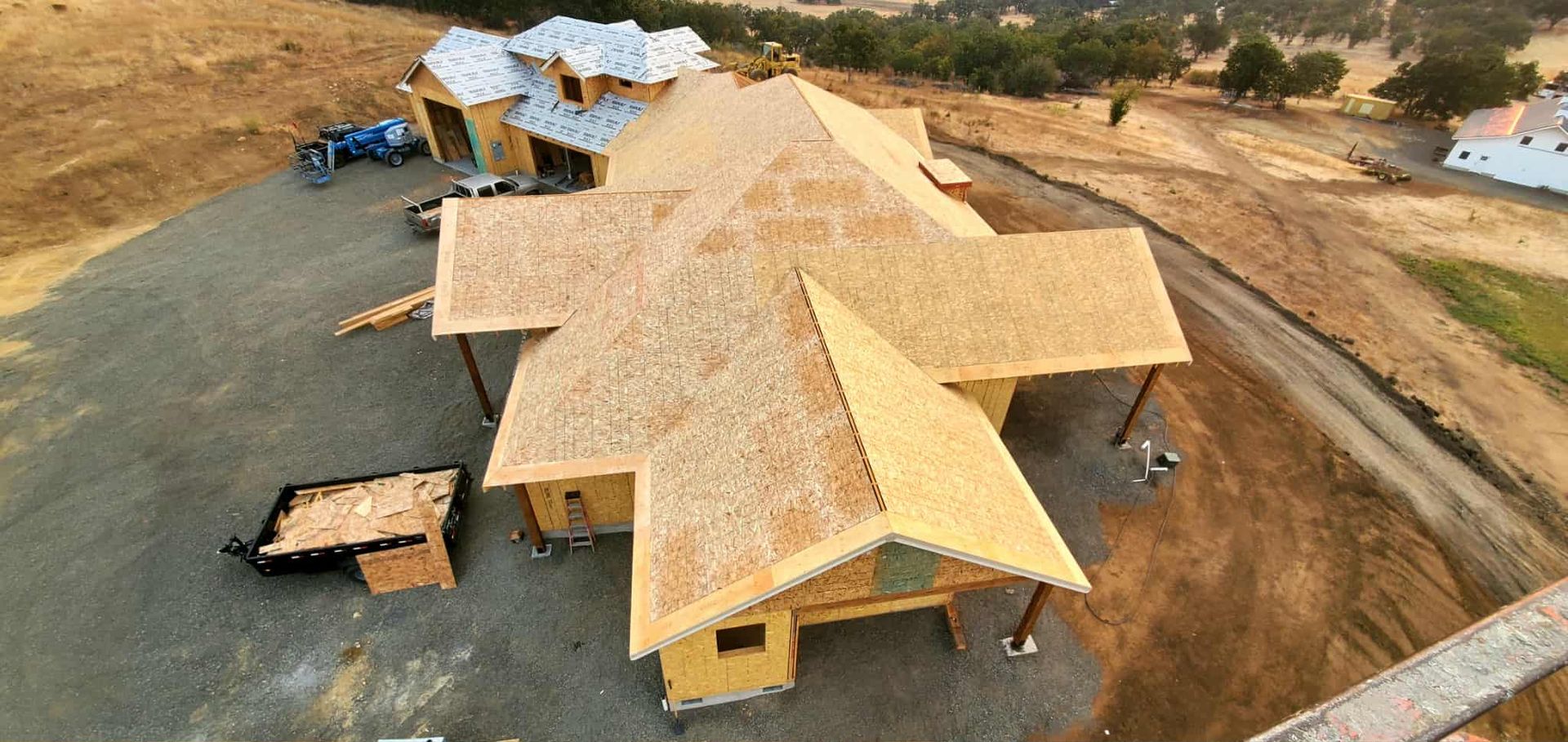
Navigating Southern Oregon's Unique Climate: The Roofing Dilemma
Welcome, fellow Southern Oregonian! You're standing at a crucial crossroads for your home, one that will dictate its protection, aesthetic, and even its resale value for decades to come. Choosing a roof in our beautiful, yet challenging, corner of the world isn't just about picking a color; it's about making an informed investment against the elements. We're talking about a decision that pits the familiar comfort of asphalt shingles against the rising prominence of metal roofing. This isn't a simple "either/or" scenario, but rather a strategic assessment tailored specifically to the unique climate we experience right here in Southern Oregon. Let's dig in and figure out what truly makes the most sense for your home.
Understanding Southern Oregon's Weather Patterns
To make the best roofing decision, we first need to get intimately familiar with the adversary: our local weather. Southern Oregon isn't uniform; it boasts a dynamic range of conditions that can be surprisingly harsh on your home's exterior.
Rain, Rain, and More Rain (Sometimes Snow!)
Let's face it: we're no strangers to precipitation. While our summers are notoriously dry, our winters can be relentlessly wet. From the persistent drizzle of Medford to the heavier downpours near the coast and the occasional significant snowfall in higher elevations, water is the primary antagonist to any roofing material. This constant exposure to moisture demands a roof that can shed water efficiently, resist mold and mildew growth, and stand up to freeze-thaw cycles without degradation. A roof that holds water or allows penetration is a recipe for disaster in our climate.
The Summer Sun's Intense Glare
Just when you thought you had the rain figured out, summer arrives with a vengeance. Our Southern Oregon summers are characterized by long days of intense, direct sunlight and often soaring temperatures. This isn't just about comfort inside your home; it's about the relentless UV radiation beating down on your roof. Over time, UV rays can cause materials to dry out, crack, fade, and become brittle. A roof that absorbs too much heat also translates directly into higher cooling costs for you, turning your attic into an oven.
Wind and Debris: A Constant Threat
Beyond the wet and the heat, we can't forget about wind and falling debris. Whether it's the occasional strong gust sweeping through the Rogue Valley or the persistent breezes carrying pine needles, leaves, and small branches, your roof needs to be anchored firmly and resilient to impact. High winds can lift or peel back compromised roofing materials, while falling debris can cause punctures or abrasions. A roof that can withstand these forces without flinching is paramount to long-term peace of mind.
Asphalt Shingles: The Traditional Choice
For decades, asphalt shingles have been the undisputed champion of American rooftops, and Southern Oregon is no exception. They’re the familiar face you see on most homes, and for good reason—they offer a blend of accessibility and performance that has historically appealed to many homeowners.
Pros: Why Shingles Have Been So Popular
The allure of asphalt shingles is multi-faceted. Firstly, affordability is a major draw. The initial material cost and installation labor are typically lower than most other roofing options, making them an accessible choice for many budgets. Secondly, they offer versatility in aesthetics. With a vast array of colors, textures, and styles—from traditional three-tab to architectural laminate shingles mimicking wood shakes or slate—you can easily match them to your home's existing architecture and personal taste. Finally, ease of installation and repair makes them practical. Most roofing contractors are well-versed in shingle installation, and individual damaged shingles can often be replaced without overhauling the entire roof, contributing to their perceived convenience.
Cons: Where Shingles Fall Short in Southern Oregon
Despite their popularity, asphalt shingles have significant vulnerabilities when faced with Southern Oregon’s specific climate challenges. Their primary weakness lies in their limited lifespan compared to other materials, especially under our conditions. The relentless summer UV rays cause the asphalt to dry out, leading to cracking, granule loss, and brittleness. Our wet winters exacerbate this by promoting moss and algae growth, which holds moisture against the shingles and accelerates decay. The constant expansion and contraction from temperature fluctuations also cause wear and tear.
Furthermore, shingles offer lower wind resistance compared to interlocking systems. Strong gusts can lift and tear off shingles, leaving your roof exposed. They are also less durable against impact from falling debris, like acorns or small branches, which can chip away granules or even puncture the material. From an energy perspective, darker shingles absorb significant heat, contributing to higher cooling costs in our hot summers. Over time, their performance degrades, necessitating replacement every 15-25 years, depending on the quality and exposure.
Metal Roofing: The Modern Contender
As traditional materials struggle against changing climates, metal roofing has emerged as a formidable contender, rapidly gaining traction for its resilience and modern appeal. It’s no longer just for barns; contemporary metal roofs offer sleek lines and robust protection for residential homes.
Pros: Why Metal Shines in Southern Oregon's Climate
Metal roofing is truly a champion when it comes to battling Southern Oregon's weather. Its most significant advantage is exceptional longevity. A properly installed metal roof can last 40-70 years, often outliving the home itself. This durability comes from its inherent resistance to virtually all the elements that plague shingles.
For our rainy winters, metal is impervious to water. It doesn't absorb moisture, so there's no risk of rot, mold, or mildew growth. Snow and ice shed off more easily, reducing the risk of ice dams. During our scorching summers, many metal roofing options, particularly those with reflective coatings, offer superior energy efficiency. They reflect solar radiation away from your home, dramatically reducing attic temperatures and subsequently cutting down your cooling bills.
When it comes to wind, metal roofs are highly wind-resistant, often rated to withstand hurricane-force winds when properly installed with interlocking panels. They also stand up incredibly well to impact from hail and falling debris, unlike brittle shingles. Furthermore, metal roofs are fire-resistant, a significant safety advantage in areas prone to wildfires. They require minimal maintenance, often just a periodic inspection and cleaning, freeing you from the cyclical repair and replacement common with shingles.
Cons: The Considerations for Metal Roofing
While metal roofing offers a host of benefits, it's not without its considerations. The most apparent hurdle is the higher initial cost. The materials themselves are more expensive than asphalt, and the specialized installation requires skilled labor, driving up the upfront investment. This can be a significant barrier for some homeowners.
Another common concern is noise. While often exaggerated, some homeowners worry about rain or hail striking a metal roof. Modern insulation and decking typically mitigate this significantly, making it no louder than a shingle roof in many cases. However, it’s a valid point to discuss with your installer.
Dent resistance can vary depending on the gauge and type of metal. While generally impact-resistant, extremely large hail or heavy falling objects could potentially cause dents, particularly in thinner gauges. Finally, color fading over extremely long periods can occur, though high-quality coatings are designed to resist this for decades. Repairs, while rare, can also be more complex and require specialized tools and expertise compared to simply replacing an individual shingle.
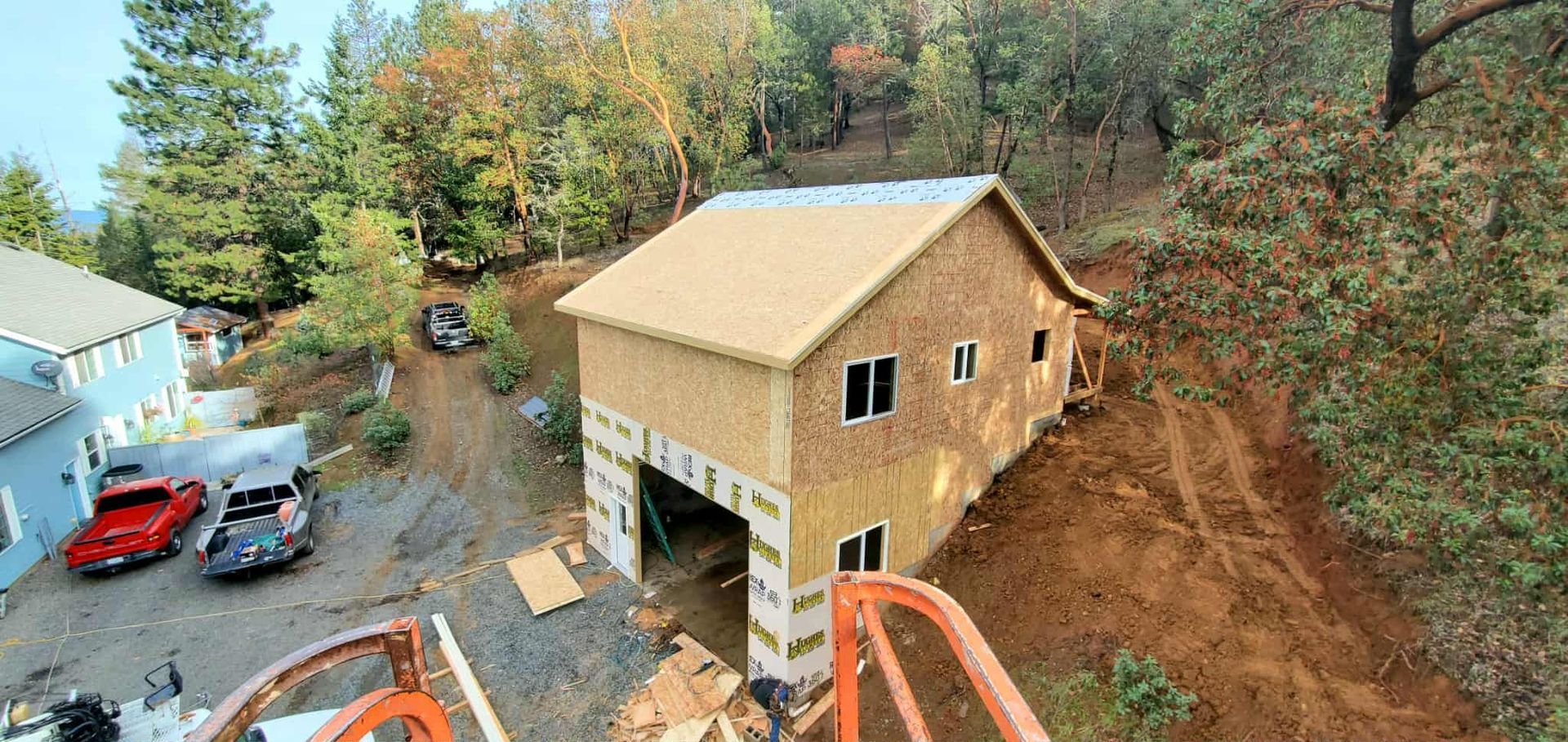
Cost Comparison: Upfront vs. Long-Term Value
Understanding the cost of a roof goes far beyond the initial sticker price. For Southern Oregon homeowners, a true cost comparison demands a look at the entire lifecycle of the material.
Initial Investment: Shingles Often Win Here
Let's be direct: if your primary concern is the lowest possible upfront expenditure, asphalt shingles will typically be the winner. Material costs for shingles are significantly lower per square foot, and the installation process is generally faster and requires less specialized labor. This makes them a very attractive option for those with tight immediate budgets or those planning to sell their home within a few years. You could expect to pay anywhere from \$4.00 to \$8.00 per square foot for a basic asphalt shingle roof, installed.
Lifespan and Maintenance: Where Metal Pulls Ahead
Here's where the script flips dramatically. While shingles might save you money initially, their relatively short lifespan (15-25 years in our climate) means you'll be replacing them two to three times within the timeframe a single metal roof would last. Imagine the cost of two or three full roof tear-offs and replacements! Factor in the recurring costs of cleaning moss, repairing wind damage, or replacing granules, and the maintenance burden adds up.
A metal roof, with its 40-70+ year lifespan, practically eliminates these cyclical replacement costs. While the initial outlay might be \$10.00 to \$25.00+ per square foot installed (depending on metal type, gauge, and finish), you're buying peace of mind for decades. The minimal maintenance requirements further cement its long-term value, as you're not paying for frequent repairs or cleanings. Over the long haul, metal almost always proves to be the more economical choice. It's akin to buying a high-quality, durable appliance that lasts for decades versus a cheaper model you replace every few years.
Energy Savings: A Hidden Benefit of Metal
Don't underestimate the power of energy efficiency in our hot Southern Oregon summers. Dark asphalt shingles absorb solar radiation, transferring that heat into your attic and home, forcing your air conditioner to work harder and longer. This translates directly into higher electricity bills.
Metal roofs, particularly those with lighter colors or specialized reflective coatings (often designated with an Energy Star rating), excel at reflecting sunlight and heat away from your home. This significantly reduces the heat gain in your attic, leading to a cooler indoor environment and substantial savings on your cooling costs. Over the lifespan of the roof, these energy savings can amount to thousands of dollars, effectively offsetting a portion of the initial higher investment. It's a "hidden" benefit that adds real financial value year after year.
Aesthetics and Home Value: What Fits Your Style?
Beyond the practicalities of weather resistance and cost, your roof plays a pivotal role in your home's curb appeal and overall value. This is where personal preference and architectural style really come into play.
Shingles: Classic and Versatile
Asphalt shingles offer a classic, familiar look that blends seamlessly with almost any architectural style. Their sheer variety in color, texture, and profile means you can find a shingle to complement a traditional craftsman, a sprawling ranch, or a contemporary home. Architectural shingles, in particular, can mimic the depth and dimension of wood shakes or natural slate, providing an upscale aesthetic at a fraction of the cost of the materials they imitate. For many, the visual comfort and versatility of shingles are exactly what they’re looking for to maintain a traditional appearance or simply match the neighborhood's prevailing style. They are a safe, aesthetically pleasing choice for a broad range of tastes.
Metal: Modern, Durable, and Diverse
Metal roofing, once relegated to industrial buildings, has evolved into a sophisticated design element for residential homes. It offers a distinct aesthetic that can range from bold and modern to subtly traditional. Standing seam metal roofs, with their clean lines and concealed fasteners, exude a contemporary elegance that instantly updates a home’s exterior. But metal isn't limited to this sleek look; there are metal shingle and tile profiles that beautifully replicate the appearance of slate, wood shake, or even clay tiles, offering the durability of metal with a more classic façade.
The wide spectrum of colors, from muted earth tones to vibrant hues, further enhances its versatility. From a home value perspective, a metal roof is often seen as a premium upgrade. Its longevity, energy efficiency, and low maintenance are attractive selling points to potential buyers, signaling a well-maintained and forward-thinking home. It sets a home apart, often elevating its perceived value and making it more appealing in a competitive market.
Installation and Local Expertise: Finding the Right Team
Regardless of the material you choose, the quality of the installation is paramount. Even the best materials will fail prematurely if not installed correctly. This is particularly true in Southern Oregon, where precise installation is critical for weathering our diverse climate.
Shingles: Widely Available Expertise
Given their long-standing popularity, finding a contractor with extensive experience installing asphalt shingles is relatively easy in Southern Oregon. Most roofing companies have crews well-versed in shingle application, and the techniques are standardized. This broader availability can sometimes translate to more competitive pricing for labor.
However, "widely available" doesn't automatically mean "quality." It's still crucial to vet contractors thoroughly, check references, ensure proper licensing and insurance, and scrutinize their warranty offerings. Even with shingles, proper ventilation, underlayment, and flashing are critical for preventing moisture issues and extending lifespan, especially in our damp winters. Don't assume that just because a contractor installs shingles, they install them well for our specific climate challenges.
Metal: Specialized Skills Required
Metal roofing installation is a much more specialized craft. It requires different tools, different techniques, and a deeper understanding of thermal expansion and contraction, proper panel interlocking, and precise flashing details. A general shingle roofer may not possess the expertise needed for a high-quality metal roof installation, which could lead to leaks, premature wear, or aesthetic issues down the line.
When considering metal, it is absolutely essential to seek out contractors who specialize in metal roofing and have a proven track record specifically in Southern Oregon. Ask for examples of their metal roof projects, scrutinize their certifications, and ensure they offer comprehensive warranties on both materials and labor. The upfront cost of a metal roof demands an investment in a skilled installer; cutting corners here will negate the benefits of the material itself. A specialist will understand how to properly vent the attic space, account for temperature fluctuations unique to our region, and ensure every seam and fastener is perfectly sealed against our persistent rain and strong winds.
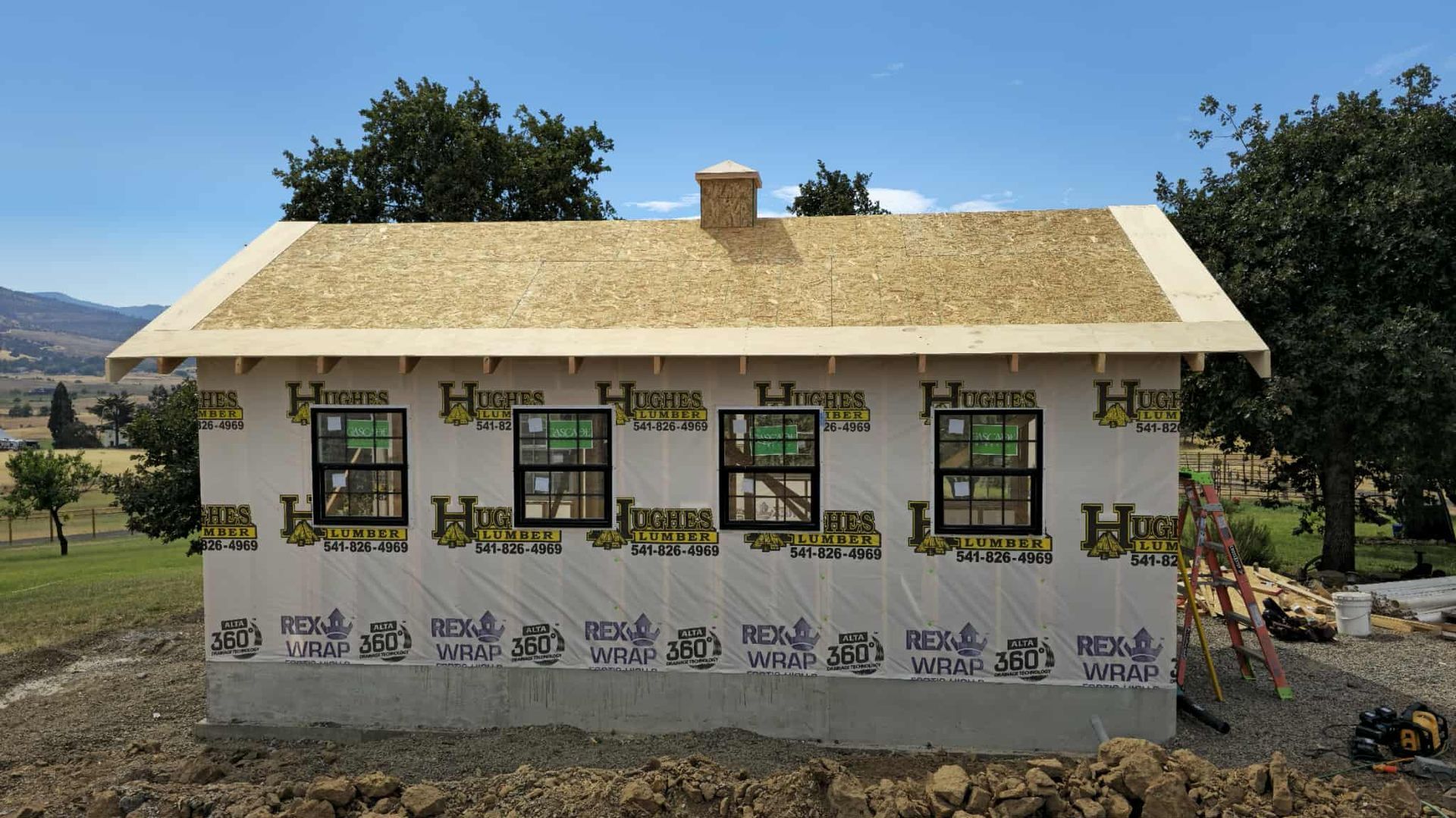
Making Your Decision: A Few Guiding Questions
Okay, the information is on the table. Now, let’s bring it home and apply it directly to your unique situation. This isn't a one-size-fits-all answer; it's about finding the best fit for you and your Southern Oregon home.
1. What's Your Budget (Now and Later)?
This is often the first and most critical question. Are you prioritizing the lowest possible upfront cost, even if it means potential future replacements sooner? Or are you willing to invest more initially for long-term savings and peace of mind? If your budget is tight and you need an immediate solution, shingles might be the only viable option. However, if you can stretch your initial investment, consider the significant long-term savings a metal roof offers by virtually eliminating future replacement costs and reducing energy bills. Think about your financial horizon and what makes sense for your household's economic strategy.
2. How Long Do You Plan to Stay in Your Home?
This question directly impacts the value proposition of a longer-lasting roof. If you plan to sell your home within the next 5-10 years, the full lifespan benefits of a metal roof might not directly materialize for you, although the increased curb appeal and reduced maintenance could still be strong selling points. In this scenario, a high-quality architectural shingle might offer a better return on investment over a shorter period. However, if this is your "forever home," or you plan to stay for 15+ years, then the longevity and durability of a metal roof make it an incredibly sound investment that will protect your home and save you money for decades to come.
3. What's Your Tolerance for Maintenance?
Be honest with yourself here. Are you the type of homeowner who enjoys tackling DIY projects, including roof cleaning and minor repairs? Or do you prefer a "set it and forget it" approach? Asphalt shingles, especially in Southern Oregon's damp climate, will require more regular maintenance—moss removal, gutter cleaning, and periodic inspections for loose or damaged shingles. A metal roof, by contrast, is remarkably low-maintenance. Beyond occasional debris removal and general inspections, it largely fends for itself. Consider your lifestyle and how much time and effort you're willing to dedicate to roof upkeep.
4. How Important is Energy Efficiency to You?
With our intense Southern Oregon summers and the rising cost of electricity, energy efficiency is more than just a buzzword; it's a financial and environmental consideration. If minimizing your carbon footprint and significantly reducing your cooling bills are priorities, metal roofing, particularly with lighter colors or reflective coatings, offers a distinct advantage. The energy savings can be substantial over the life of the roof, effectively paying you back for a portion of your initial investment. If energy savings are secondary to other concerns, shingles remain an option, but be aware of the potential for higher cooling costs.
The Verdict for Southern Oregon Homes
After weighing all the factors, the conclusion for Southern Oregon homes leans heavily towards metal roofing as the superior long-term choice. Its unparalleled durability, exceptional resistance to our relentless rain, intense summer sun, and strong winds, coupled with its remarkable energy efficiency and minimal maintenance requirements, make it an incredibly wise investment.
While the initial cost is higher, the extended lifespan of 40-70 years means you avoid the expense and disruption of multiple shingle replacements. The energy savings further sweeten the deal, contributing to a lower total cost of ownership over time. For homeowners planning to stay in their homes for the long haul, or those looking to maximize their home's value and protection against our specific climate challenges, metal roofing stands out as the prudent and premium choice.
Asphalt shingles still have their place, particularly for those with very tight immediate budgets or short-term residency plans. However, their vulnerabilities to our climate mean a shorter lifespan and higher ongoing maintenance costs, leading to a less robust performance in Southern Oregon.
Ready to Make the Right Choice?
The decision is yours, and now you're equipped with a comprehensive understanding of what’s at stake. Take these insights, revisit your personal priorities, and engage with reputable, local roofing contractors. Seek out those with proven expertise in the specific material you're considering. Get multiple quotes, ask tough questions about warranties, and don't be afraid to ask for references.
Your roof is your home's first line of defense. Investing wisely now will ensure decades of protection, comfort, and enhanced value for your Southern Oregon home. Choose with confidence, and enjoy the peace of mind that comes with making an informed, intelligent decision.
How long do metal roofs last compared to shingles in Southern Oregon?
Metal roofs typically last 40-70 years in Southern Oregon's climate, while asphalt shingles need replacement every 15-25 years due to our wet winters and intense summer UV exposure. This means you'd replace a shingle roof 2-3 times during the lifespan of one metal roof, making metal the more durable long-term investment.
Is a metal roof worth the extra cost in Medford and Grants Pass?
Yes, despite higher upfront costs ($10-$25 per sq ft vs $4-$8 for shingles), metal roofs prove more economical over time in Southern Oregon. Factor in energy savings from reduced cooling costs, minimal maintenance needs, and avoiding multiple replacements, and metal roofing typically pays for itself within 15-20 years.
Are metal roofs noisy during Southern Oregon's rainy season?
This is a common myth. With proper installation including solid decking and quality insulation, a metal roof is no louder than asphalt shingles during rain. Modern underlayment and attic insulation effectively dampen any sound, making noise a non-issue for properly installed metal roofs.
Which roofing material handles Southern Oregon's weather extremes better?
Metal roofing excels in our climate's challenges. It sheds rain efficiently without absorbing moisture (preventing moss/mold growth), reflects summer heat to reduce cooling costs, withstands high winds up to hurricane force, and resists damage from falling pine needles and debris common in our forested areas.
